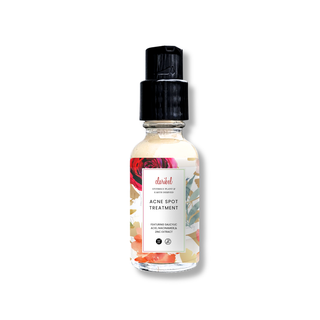
Pore Clogging Ingredients: 10 Sneaky Ones to Look Out For
The Dangers of Pore Clogging Ingredients
A clogged pore or clogged pores all over is an open invitation for an infection. Bacteria loves to live in a moist environment, and when pores get clogged with dirt and grime, they become a perfect breeding ground for bacteria that can lead to acne and blemishes.
And what’s worse is that bacteria can travel through the pores and lead to breakouts on your face, neck and even your back. When you unclog your pores, your skin will look and feel healthier. Not only will it reduce the risk of breakouts, but it will also increase your confidence when you’re in the public eye.
It makes sense to invest in the knowledge and products that can help unclog your pores, as they are the gateway to your skin.
Lifestyle Changes & Tips to Avoid Clogged Pores
Clogged pores can lead to a variety of skin issues such as acne, blackheads, and overall dullness. Making daily changes to your skin care routine can help prevent clogged pores and maintain clear, healthy skin.
PROPER CLEANSING
One crucial step is to be mindful of the ingredients in your skin care products. Understanding what are pore clogging ingredients is essential to avoid exacerbating pore congestion. Certain ingredients, such as mineral oil, acetyl lanolin alcohol, as well as some topical butters and oils, can be comedogenic to some people (not all or even most), meaning they can clog pores and eliminating the cause is the goal.
It’s important to check the labels on your skin care products and opt for non-comedogenic or non-acnegenic formulas that are less likely to cause pore blockages.
In addition to being cautious about pore clogging ingredients, it’s important to cleanse the skin thoroughly every day. A gentle, non-abrasive cleanser can effectively remove dirt, oil, and makeup without stripping the skin of its natural oils.
CLEANSING TWICE A DAY
Cleansing offers immediate benefits for your pores, sweeping away the day's accumulation of oils, sweat, and environmental pollutants.
This instant refresh allows your skin to breathe freely. But the magic doesn't stop there – regular cleansing has long-term effects too. Over time, it helps prevent the buildup of stubborn debris like dead skin cells, excess sebum, and makeup residue that can lead to pesky blackheads and breakouts.
Cleansing twice a day, especially in the evening to remove accumulated impurities from the day, can help prevent pore blockages.
EXFOLIATE AT LEAST ONCE A WEEK
Exfoliation is another essential step in preventing clogged pores. Regular exfoliation helps slough off dead skin cells that can accumulate and contribute to pore congestion.
However, it’s crucial to use an exfoliant that you feel is the right texture for your skin type, to avoid irritating the skin and causing inflammation, which can also lead to clogged pores. If your skin feels sensitive, using a washcloth might be the best way to gently exfoliate for this time period until you skin feels less irritated.
MOISTURIZE
Moreover, keeping the skin hydrated is vital for maintaining healthy pores. Using a lightweight, non-comedogenic moisturizer can help balance the skin’s moisture levels without adding excess oil that could potentially clog pores.
Hydration also supports the skin’s natural shedding process, which aids in preventing pore blockages. Alongside this, using sunscreen daily is imperative for skin health.
WEAR SUNSCREEN
Contrary to popular belief, sunscreen can actually help unclog pores, making it a vital tool in any skincare enthusiast's arsenal. While many associate sunscreen with greasy formulas that lead to breakouts, modern sunscreens are designed to protect your skin without causing congestion. In fact, some sunscreens contain ingredients like zinc oxide and titanium dioxide, which have anti-inflammatory properties that can help calm acne-prone skin. These mineral filters sit on top of the skin, creating a protective barrier that prevents environmental pollutants from entering and clogging pores. Additionally, by shielding the skin from harmful UV rays, sunscreen helps prevent the overproduction of sebum—a common cause of clogged pores.
Sunscreen protects the skin from harmful UV rays and prevents premature aging, but it’s essential to choose a non-comedogenic formula to avoid pore congestion.
REDUCING STRESS
Paying attention to lifestyle factors can also make a difference in preventing clogged pores. Managing stress levels is crucial as stress can lead to an increase in oil production, which may contribute to clogged pores.
Something as simple as a short walk outside or a cup of herbal tea can help decrease stress levels, which in turn can help improve skin.
EAT A BALANCED DIET
Additionally, incorporating a balanced diet rich in fruits, vegetables, and lean proteins can support overall skin health. Avoiding excessive consumption of pore clogging foods like greasy or fried items can also help maintain clear pores.
By incorporating these practices into your daily skin care regimen, you can effectively prevent clogged pores and promote clear, radiant skin.
Top 10 Pore Clogging Ingredients
Mineral Oil. Mineral oil, a commonly used ingredient in skin care and cosmetic products, can be a major culprit in clogging pores. It is derived from petroleum and forms a barrier on the skin, trapping dirt, bacteria, and other impurities. Look for non-comedogenic alternatives that won't clog your pores.
Lanolin. Lanolin is a waxy substance extracted from sheep's wool and is often found in moisturizers and lip balms. While it can provide hydration, it has a high likelihood of blocking pores, leading to breakouts. Opt for lanolin-free alternatives to keep your skin clear.
Isopropyl Myristate. Isopropyl Myristate is a common ingredient in many skin care products due to its ability to improve texture. However, it is known to be highly comedogenic, meaning it can clog pores and contribute to acne. Avoid products containing this ingredient if you have acne-prone skin.
Fragrance. Fragrances are synthetically made and can clog your pores. Most of the fragrance oils are derived from petrochemicals and synthetic precursors that clog your pores and can damage your skin.
Alcohol. Alcohol is known to dry out your skin, strip away its natural nutrients and lead to premature aging. It can also make your skin feel tight and itchy. As alcohol dries out your skin, dried cells can clog pores.
Parabens. These are synthetic preservatives that are known to increase the risk of developing skin diseases like eczema and dermatitis.
Sulfates. Sulfates are synthetic chemicals that are commonly used in shampoos and cleansers. They strip away your skin’s essential oils and rob your skin of its natural glow.
Silicones. Silicones are widely used in skin care and cosmetic products due to their ability to create a smooth and silky texture. However, certain types of silicones, such as dimethicone, can create a barrier on the skin that traps dirt and bacteria, leading to clogged pores. Look for silicone-free alternatives if you're prone to breakouts.
Synthetic dyes. There are used to create an illusion of a fair and glowing skin, but they can have a serious impact on your skin’s health.
Petrochemicals. These are derived from crude oil and are known for their toxicity.
Complete List of Pore Clogging Ingredients
1-hexadecanol acetate
1-hexadecanol
Acetic acid hexadecyl ester
Acetylated Lanolin
Acetylated Lanolin Alcohol
Acetylated wool fat
Acetylated wool wax
Adansonia digitata l.
Agar
Ahnfeltiopsis concinna extract
Alaria esculenta extract
Alga bladderwrack
Algae
Algae Extract
Algin
Alginate
Alginic acid
Algea
Aphanothece sacrum polysaccharide
Arthrospira plantensis
Ascophyllum nodosum extract
Asparagopsis armata extract
Baobab
Beeswax
Beef tallow
Bismuth
Bryopsis africana
Butyl Octadecanoate
Butyl Stearate
Butyl Stearic acid
Butyrospermum
Cacao seed butter
Capea biruncinata var. denuda sonder
Capea biruncinata var. elongata sonder
Carageenan gum
Carastay c
Caulerpa lentillifera extract
Caulerpa filiformis
Carrageenan
Carrageenan Moss
Cera alba
Cera bianca
Cera flava
Cera olea
Cetyl Acetate
Chaetomorpha linum (aerea) cladophora radiosa
Chlamydomonas reinhardtii extract
Chlorella
Chlorophyceae
Chondrus Crispus
Cladophora cf. subsimplex
Cladosiphon okamuranus extract
Coal Tar
Coconut Alkanes
Coconut Butter
Coconut Extract
Coconut Nucifera extract
Coconut Oil
Cocos nucifera oil
cocos nucifera seed butter
Coenochloris signiensis extract
Colloidal Sulfur
Cotton Awws Oil
Cotton Seed Oil
Corallina officinalis extract
Corn oil
Creosote
Cystoseira tamariscifolia extract
D & C Red # 17
D & C Red # 21
D & C Red # 3
D & C Red # 30
D & C Red # 36
Decyl Oleate
Decyloleate
Dicotyledons succinate
Dictyopteris membranacea
Dictyopteris polypodioides
Diethylhexyl sodium sulfosuccinate
Diisooctyl succinate
Dilsea carnosa extract
Dioctyl sodium sulfosuccinate
Dioctyl Succinate
Disodium laureth sulfosuccinate
Disodium Monooleamido
Disodium Monooleamido peg 2 sulfosuccinate
Disodium oleamido peg-2 sulfosuccinate
Dodecanoic acid
Dodecoic acid
Dodecylic acid
Dunaliella salina extract
Duodecylic acid
Durvillaea antarctica extract
Ecklonia cava
Ecklonia cava extract
Ecklonia radiata
Enteromorpha compressa extract
Ethoxylated Lanolin
Ethylhexyl Palmitate
Ethylhexyl Stearate
Eucheuma spinosum extract
Fucoxanthin
Fucus serratus
Fucus vesiculosus
Gamtae extract
Gelidiella acerosa extract
Gelidium amansii extract
Gigartina stellata extract
Glyceryl monostearate
Glyceryl Stearate SE
Glyceryl-3 Diisostearate
Glycine soja oil
Glycine max
Gracilariopsis chorda extract
Haematococcus pluvialis extract
Haematococcus pluvialis
Haslea ostrearia extract
Hexadecanol acetate
Hexadecyl Acetate
Hexadecyl Alcohol
Himanthalia elongata extract
Hizikia fusiforme extract
Hydrogenated Vegetable Oil
Hydrolyzed rhodophycea extract
Hydrous magnesium silicate
Hypnea musciformis extract
Hypneaceae extract
Irish Moss
Isocetyl Alcohol
Isocetyl Stearate
Isodecyl Oleate
Isohexadecanol
Isohexadecyl alcohol
Isohexadecyl stearate
Isooctadecyl isooctadecanoate
Isopalmitic alcohol
Isopalmityl alcohol
Isopropyl isodecanoate
Isopropyl Isostearate
Isopropyl Linolate
Isopropyl Myristate
Isopropyl Palmitate
Isostearyl Isostearate
Isostearyl Neopentanoate
Jania rubens extract
Jojoba wax
Kappaphycus alvarezii extract
Karite
Kousou ekisu
Laminaria Digitata Extract
Laminaria Saccharina Extract
Lanolin acetate
Lanolin alcohol acetate
Lanolin polyoxyethylene ether
Laureth-23
Laureth-4
Lauric Acid
Laurostearic acid
Lcd
Linolate
Liquor carbonis detergens
Liquor picis carbonis
Lithothamnium calcareum powder
Lpc
Macroalgae
Macrocystis pyrifera extract
Mangifera indica seed butter
Marula
Marula oil
Methylsilanol mannuronate
Mink Oil
Moss
Myristate
Myristic Acid
Myristyl
Myristyl Lactate
Myristyl Myristate
Myristyl Propionate
N-hexadecyl alcohol
N-hexadecyl ethanoate
Octadecanoic acid
Octadecyl heptanoate
Octyl Palmitate
Octyl Stearate
Oleth-3
Oleth-3 phosphate
Oleyl Alcohol
Palmaria palmata extract
Palmityl Acetate
Palmityl Alcohol
Parkii
PEG 2 Sulfosuccinate
PEG 2- Sulfosuccinate
PEG 16 Lanolin
PEG 200 Dilaurate
PEG-75
PEG 8 Stearate
Pelvetia canaliculata extract
PES
Phaeodactylum tricornutum extract
Phaeophyceae
Pix carbonis
PG Monostearate
PGMS
PPG-2 Myristyl
PPG 2 Myristyl Propionate
PPG 2 Myristyl Ether Propionate
Plankton
Polyethylene glycol 200
Polyethylene glycol dodecyl ether
Polyethylene glycol jojoba acid
Polyethylene glycol lauryl ether
Polyethylene glycol monododecyl ether
Polyethylene glycol stearate
Polyoxyethylene lauryl ether
Polysiphonia elongata extract
Polyglyceryl-3 Diisostearate
Polyglyceryl-3-Disostearate
Porphyra umbilicalis
Porphyridium
Porphyridium cruentum extract
Porphyridium polysaccharide
Potassium Chloride
Potassium Salt
Propanoic Acid
Propylene Glycol Monostearate
Pyrene coal tar pitch
Red Algae
Rhodophyta
Rhodophyceae extract
Sargassum filipendula extract
Sargassum fusiforme extract
Sclerocarya birrea
Sclerocarya birrea seed oil
Seaweed
Sea fern
Sesame
Sesamum indicum
Shark Liver Oil
Shark Squalene
Shea
Shea Butter
Sheep alcohol
Simmondsia chinensis seed wax
Sles
Slo
Sls
Sodium Alginate
Sodium Alkylethersulfate
Sodium Docusate
Sodium Dodecyl sulphate
Sodium Laureth Sulfate
Sodium Lauryl Ether sulfate
Sodium Lauryl Sulfate
Soja
Solulan 16
Sorbitan Monooleate
Sorbitan Oleate
Soy
Soybean
Soybean Oil
Sphacelaria
Spirulina
Squalene
Steareth 10
Stearic Acid Tea
Stearyl Heptanoate
Starch
Sulfated Castor Oil
Sulfated Jojoba Oil
Sulfosuccinate
Sulphated castor oil
Talc
Talcum
Tea stearate
Tetradecanoic acid
Tetradecyl lactate
Tetradecyl myristate
Tetradecyl propionate
Theobroma butter
Theobroma cocoa seed butter
Theobroma oil
Triticum aestivum
Triticum vulgare
Turkey red oil
Undaria Pinnatifida
Ulva lactuca
Ulva fasciata
Ulva rhacodes
Vegetable gelatin
Vitellaria paradoxa
Vulvic acid
Wakame
Wheat
Wheat Germ Glyceride
Wheat Germ Oil
Wool alcohol
Wool fat
Xanthophyta
Xylene
Zea mays
Our Papaya Enzyme Exfoliating Mask is an excellent way to naturally keep pores clear and skin glowing:
Conclusion
Unclogging your pores may be on your list for healthier skin. If you want to see visible results, you need to ensure that you cleanse your skin thoroughly, exfoliate your skin, and moisturize your skin to keep it hydrated - while avoiding ingredients that can make clogged pores worse (listed above).
It’s important to use skin care products that do not include pore clogging ingredients. Our Papaya Enzyme Exfoliating Mask is an excellent way to naturally keep pores clear and skin glowing.






